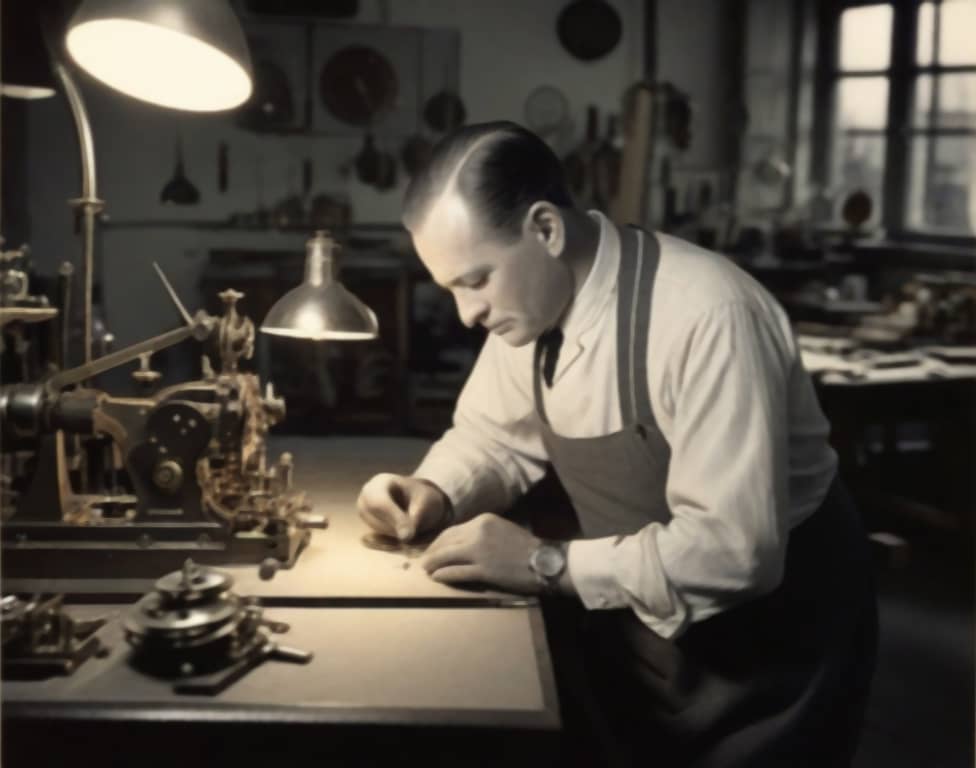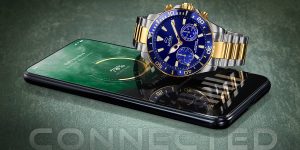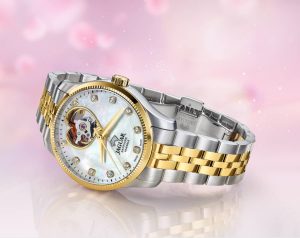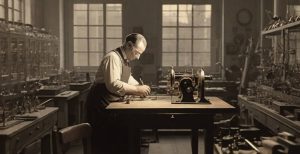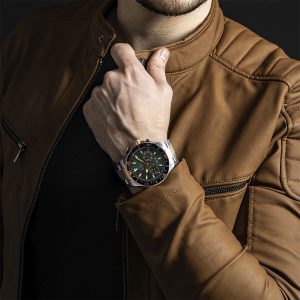A Different Swiss Watch
The story of Jaguar Watches begins in the 20th century, in 1938, in the Swiss commune of Muralto. Bathed by the waters of Lake Maggiore, into which the Maggia River flows, this town is one of the most beautiful vistas of the Alpine country. Although located outside the traditionally recognized watchmaking hubs of the country, in Muralto, the Haas family ran a workshop with a long tradition of watchmaking, mainly producing high-precision parts for other brands. Peter Haas, a young engineer working in this family business, seemed destined to eventually take over the business established by his ancestors. However, Peter had much greater ambitions, as he truly loved his work and was obsessed with perfection in every project he undertook. It wasn’t enough for him to follow the specifications of other watchmakers and ensure a correct product. The founder of Jaguar wanted to take control of the final product, to be able to imprint it with all his technical and aesthetic aspirations. Despite the challenges this entailed, his dream was to found a new watch brand that could reflect his personality and goals.
A Watchmaker Who Didn’t Accept What Fate Had Reserved for Him
At the time, the custom when founding a new watchmaking manufacture was to use the family surname as the main brand for their products, as this exemplified the know-how passed down from parents to children over the years. However, defying established norms, Haas decided to name his watches Jaguar. For the young entrepreneur, this animal was one of the greatest icons of beauty and elegance in the natural environment. His mission in founding the brand was absolutely clear: to infuse each of his collections and the watches that came out of his atelier with the same untamed force and harmony that the powerful American feline, the embodiment of the wildest beauty, inspired in him. It was not easy to achieve, but without a doubt, Peter Haas put his utmost effort into it.
With that goal in mind, he decided to use only top-tier materials, ensuring reliability and precision in his products. He wanted to forge sublime watches, tiny gears set like jewels, designed with such precision and beauty that they stopped time to create moments of eternal perfection that, many years later, would still captivate the gazes of both connoisseurs and laymen alike, while at the same time providing the most accurate and reliable information about time.
Effort and Watchmaking Expertise as Core Values
The founder had to overcome many challenges. Not being physically located in the main watchmaking area made access to knowledge and collaborations difficult. Competing with his own family was certainly not the best starting position. And the economic and social situation in that interwar Europe was definitely not the substrate for growing a watch brand aimed at higher markets.
In its early days, Jaguar focused primarily on producing elegant and refined watches, seeking to deliver distinction and refinement to its customers, always from the origin of tradition and quality inherited from the Haas family, as present in the DNA of the brand as the passion and aesthetics of the founder. In just a few years, the brand positioned itself as a pioneer in the new Swiss watchmaking, standing out for its aesthetic power and functionality offered to its owners. The era of the Second World War and the following years, however, were difficult not only for Jaguar but for most of the European industry.
In the 1960s, however, Jaguar had managed to consolidate itself as one of the recognized watch brands in many Western countries, offering its select customers a wide range of models for men and women. Particularly renowned were their sports watches, very popular among those seeking the style and sophistication of classic watches but wanting to wear them in different environments while showing a part of their character and magnetism.
An Untamed Character with a Great Manufacturing Structure
In 1989, the Jaguar brand was acquired by the Festina Group, a Spanish-Swiss conglomerate founded by Miguel Rodríguez. This group includes high-quality watch manufacturing centers in Switzerland, such as the renowned MSE or Soprod. Thanks to its powerful industrial capacity and the international focus of the Festina group, the Jaguar brand has since experienced a second youth. Without renouncing its watchmaking tradition, it incorporates new technologies and manufacturing processes to reach an increasingly specialized public demanding unique pieces that reflect the authentic personality of a great Swiss watch.

